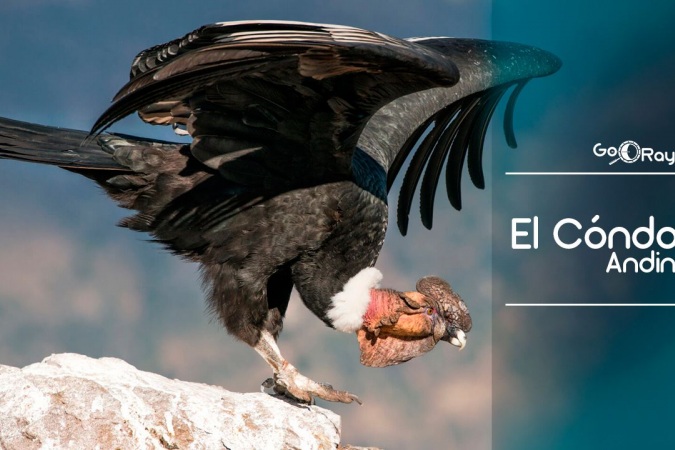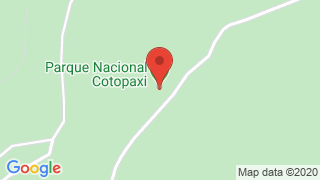Andean Condor, Ecuador



Condor Ecuador
- Spanish: it is known with the names Andean Condor, Condor, Vulture, Condor of the Andes.
- Quechua: Kuntur
- "National Andean Condor Day" is celebrated every July 7th.
So if you want to see one of these beautiful animals you must visit the provinces of the Ecuadorian highlands, knowing in advance that the flora and fauna of the country is very abundant and above all, varied.
The so-called Andean condor is found in South America in the Andes mountain range . In Ecuador it is called the King of the Andes. It is found in the national symbol of Ecuador, the National Shield.
Classification
- Kingdom: Animal (Animalia).
- Phyllum: Cordados (Chordata).
- Subphyllum: Vertebrates (Vertebrata).
- Class: Birds.
- Order: Ciconiformes (Ciconiiformes).
- Family: Cathartids (Cathartidae).
The name Condor Cathartidae, which refers to the bird family, the condor belongs to this group, derives from the Greek word "kathartes" which means "the one who cleans". This family was usually part of the Falconiformes order (hawk-shaped birds), but there are studies that suggest a closer relationship with the Ciconiform order (stork-shaped birds). The condor could be more related to storks and herons than eagles, vultures and other daytime raptors.
This species is monotypic, that is, it has no subspecies.
The Condor, is the largest flying animal that currently exists in the world.
- Length: 1.20 to 1.30 m.
- Wingspan: 3 to 3.30 m. (Wingspan is the distance between the tips of the wings, when extended)
- Weight: up to 12 kilos the male and up to 10 kilos the female.
The condor has a robust body. The general coloration of its plumage is black and contrasts with a large white spot located on the top and middle of both wings, very visible in flight when it turns.
Head and neck are bare, without feathers, covered by dark reddish skin, hue that varies according to the mood of the animal. At the base of the neck it exhibits a white down collar that protects the bare skin of the neck.
The beak is strong, large and hooked, with sharp edges, useful for tearing the leather of cows, guanacos or llamas, and crushing their bones. They have nostrils (nostrils), without a central partition that divides them.
It has a relatively short tail. Its legs are dark brown, with blunt and slightly curved nails on its four fingers. The back finger is underdeveloped and, for this reason, they are not hunting birds. They cannot take the prey or take it to a safer place to feed, but must eat in the same place where they found the dead animal. Its legs are more similar to those of a hen than those of the eagle or the hawk, birds that have a developed and prehensile back finger, and curved, long and pointed nails, suitable for killing and transporting the prey.
In flight, it is recognized by its rectangular and long wings, with very large feathers at its ends, which resemble extended fingers. These feathers are often strongly curved upwards.
Presents sexual dimorphism (noticeable physical differences between male and female). The male has a fleshy crest of dark reddish color and a caruncle (fleshy fold) that hangs from the neck. The iris of the eye is brown. The female has a plumage identical to that of the male, but it lacks a crest and its iris is red.
The juveniles of both sexes are of general gray-brown coloration and the head and neck of blackish skin, with brown collar. Gradually, in a span of six years, they acquire the black plumage typical of adults.
Andean condor
The condor can live up to 75 years, being one of the longest birds on the planet.
Distribución
Lives in South America, along the Andes mountain range, from Colombia and Venezuela to Cape Horn. It is found in the following countries: Argentina, Bolivia, Brazil (accidental), Colombia, Chile, Ecuador, Paraguay (accidental), Peru and Venezuela. In Chile, it is located from Arica (I region) to Cape Horn (XII region)
Habitat
Mainly the mountain area, characterized by desolate mountains, deep canyons and high cliffs. It also descends to the valleys, steppes and open meadows.
In Peru, northern Chile and the southern tip of South America, it is usually present on the coast, around colonies of birds, wolves and sea elephants. It frequents the dumps of the cordilleran mining camps, in search of waste.
It lives from sea level to 5,000 meters of altitude.
The condors' habitat requires at least three basic conditions:
- Winds or rising air currents that allow them to fly high.
- Lands cleared to discover the carrion from the height.
- An adequate supply of dead animals.
Feeding
Almost exclusively scavenger, their diet is based on the consumption of dead animals. This behavior makes it an important link in the balance of ecosystems, as it accelerates the elimination of wastes that could constitute a focus of infections.
For this reason, the SAG (Agricultural and Livestock Service) classifies it as a beneficial species for agricultural activity and key in maintaining the balance of ecosystems.
To find food, it looks from the air, at high altitude. It has an extremely sharp sight. Once the carrion is located, the condors do not descend immediately but are limited to flying on it or perch somewhere where it is clearly seen. It is very suspicious and it may take one to three days before they finally get close. It begins to feed on the most accessible or soft points of the corpses: eyes, tongue, anus, udder, testicles, abdomen and crotch.
With their strong and sharp spikes they tear the hardest tissues and open the leathers. This allows other scavengers, such as jotes and caranchos, with less force in their beaks, to also take advantage of eating.
Many times food is scarce, so when it finds what to eat, it devours as much meat as possible, to the point where it is sometimes difficult for it to take flight and rest for a while. In its big crop you can store up to 4 kilos of food. Although it is a scavenger, there have been occasions when they hunt small live prey or attack dying or newborn animals, especially when dead bodies are scarce.
In the mountain range they feed on the bodies of guanacos, vicunas, llamas, cows, lambs or horses. On the coast, its most important provision is made up of dead marine animals, dragged to the shore by waves, such as whales, dolphins, sea lions, turtles, fish, penguins and other seabirds.
Reproduction
Prepared by Lideres sin Fronteras www.lideressinfronteras.cl. Condors are monogamous and form a partner for life. Only when one of them dies, the other seeks a new partner. In Chile, the mating season includes the months of August and September. Courtship consists of a kind of dance on the ground.
To nest, they choose inaccessible places, usually caves in large vertical rocky walls, protected from wind and weather, high above the ground. The nest is very simple. With the chest, they press the sand or pebbles that form the substrate of the cave to form a depression and with the beak they shape the edges. Sometimes, they simply lay the egg on the rock.
The only egg that it places is oval, white and measures approximately 114 x 70 mm. The chicken is born after two months of incubation and, if the egg is lost for some reason, they have the ability to replace it with another. Both parents participate in the incubation and breeding of the chicken, which they feed with regurgitated meat. In this period, they are able to fly up to 200 kilometers from the nest in search of food.
At six months, the baby makes its first attempts to fly in the immediate area to its place of birth and at nine months leaves the nest and accompanies the parents on their flights. He becomes independent of them when he is around 18 months old.
Given the long period of paternal care that chicken requires, condors only reproduce every two years. This makes them one of the species with the lowest reproductive index in the animal kingdom. They reach sexual maturity between 8 and 10 years and remain fertile until very advanced age, which represents compensation at their low reproductive rate.
Conduct
Social Behavior: it is usually observed planning alone or in small groups. They are gregarious (grouped) in their usual roosts and around food. Many individuals who devour the body together can gather around a large dead animal. There is a hierarchy when feeding: first the adult males, then the adult females and finally the young.
Locomotion: To fly, take advantage of the ascending currents of warm air (thermal) and the winds that rise when hitting the mountains. In this way you can Plan for Leaders without Borders www.lideressinfronteras.cl plan for hours, with few flutters and considerable energy savings.
Although this mode of flight decreases the effort, the condor becomes dependent on the weather, because the thermal springs only occur when the sun heats cold air masses and they rise. When there are prolonged periods of bad weather, he cannot fly and is limited in his search for food.
The rubbing of the wings against the wind produces a squeak that can be heard clearly if it is relatively close.
Due to its large size and weight, it usually takes flight from high places. It is difficult for him to take off from the ground.
Rest: Condors spend the night in cracks or caverns between the mountains. These places are known as roosts, vultures or condoreras and are generally located in high cliffs, protected from rain, wind and potential predators.
The condoreras are shared by adults and juveniles of both sexes, who usually use several different resting places, depending on the availability of food in the area.
The preferred and most disputed places are those that receive the sun's rays earlier.
Character: It is a shy and distrustful bird before the human being.
Vocalization: Cannot emit voices because it does not have a syringe (the phonation apparatus of the birds that corresponds to the larynx of human beings). During courtship and mating he throws loud puffs or snorts.

Publicado en:
Publicado por:



